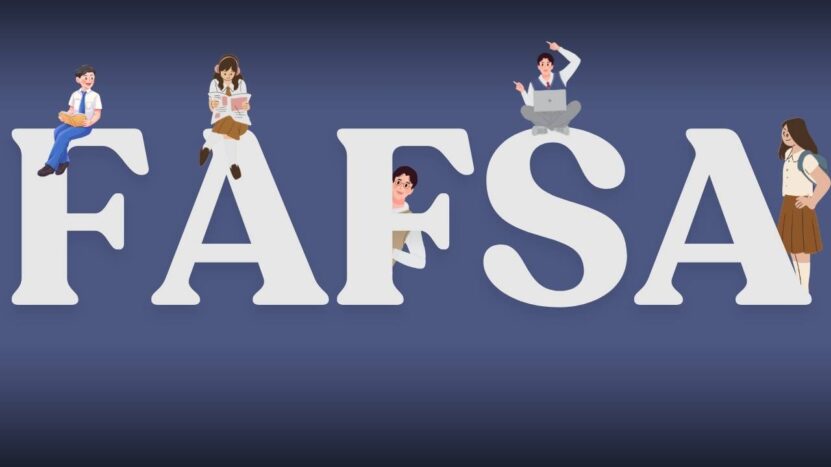
Share Post:
Textbooks cannot move, flash, or respond. Apps can. Chemistry students in high school need more than printed charts and static rules. They need tools that answer, tools that react, tools that stay in their pocket all day.
Each free app listed below gives students something direct. Some focus on equations. Some work with reactions. Some allow structure drawing with clean touch controls. Every app has value without requiring any payment or subscription.
All ten apps help students study smarter. They fit modern devices. They follow updated science standards. Each one supports learning without replacing the basics.
Table of Contents
Toggle1. Chemistry by Denis Chaschin
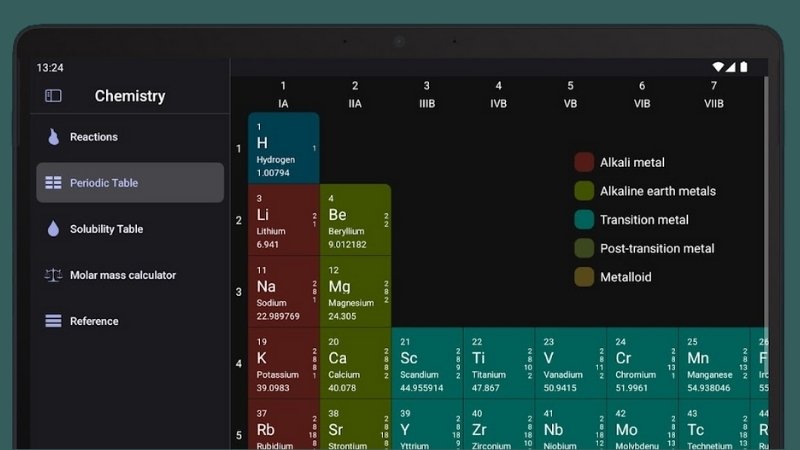
| Feature | Details |
|---|---|
| Platform | Android |
| Size | Around 20 MB |
| Offline Access | Yes |
| Visual Periodic Table | Yes |
| Quiz Feature | Yes |
| Cost | Free |
The first thing that hits is speed. Open the app and the periodic table loads instantly. No login screen. No pop-ups. Just chemistry. Each element sits in a clean grid with bold numbers and sharp contrast. Tap an element like iron or iodine, and it unfolds into a block of rich detail: atomic mass, radius, ionization energy, shell model, oxidation states, discovery year, and real-world context.
Students who hate flipping through textbooks can use this to go deep fast. The reaction section works like a search engine. Type in a compound, and it gives back balanced reactions with conditions and sometimes even tips on temperature or lab setup.
There’s a tab called “Tasks” that flips into a quiz mode. No timer. No ads. It feeds real exam-style questions about compounds, element groups, and basic reactions. Choose the wrong answer, and it shows the right one with a quiet correction. No lectures. Just facts.
No bloated menus. Everything sits under four tabs: Elements, Reactions, Tasks, and Favorites. Every section runs offline. Perfect for bus rides, school hallways, and last-minute reviews. Students who want clarity without classroom noise will grab this and never delete it.
2. ReactionFlash
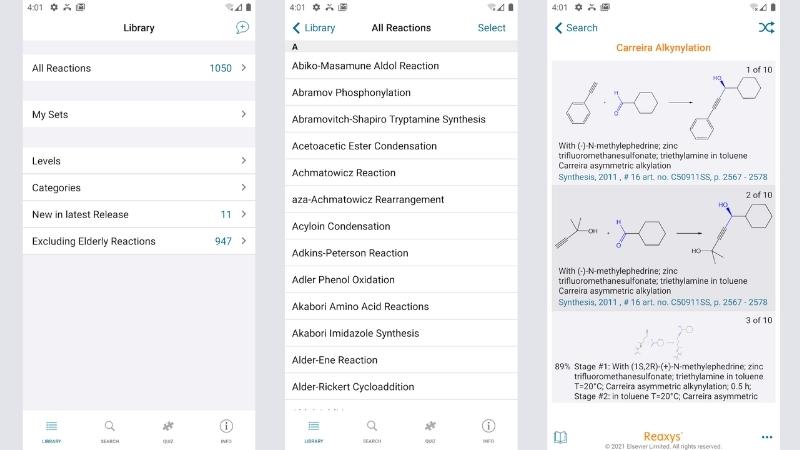
| Feature | Details |
|---|---|
| Platform | Android, iOS |
| Size | 50–60 MB |
| Offline Access | Partial |
| Focus Area | Organic Reaction Mechanisms |
| Cost | Free with optional login |
Most chemistry apps focus on naming or counting atoms. ReactionFlash does not. It focuses on mechanisms, not outcomes. It shows the how, not just the what. Tap any of the hundreds of organic reactions, and it plays out the full mechanism in frames. Arrows show electron flow. Intermediates appear one by one. The whole process unfolds like a storyboard.
Each mechanism comes with a short summary, a name, conditions, and examples of real molecules. Great for students who freeze up at curly arrows or cannot figure out what to draw next. No clutter. No forced reading. Just the reaction laid bare.
Reactions are grouped by type: substitution, elimination, rearrangement, and more. There’s a favorites button for quick access. A built-in search filters by reagent, mechanism type, or product shape.
Not every feature works offline. But most of the main library runs without internet once downloaded.
For any student dealing with organic chemistry, this app changes everything. It trains the mind to read reactions like a language. It builds speed. It builds confidence. And it never wastes time.
3. KingDraw
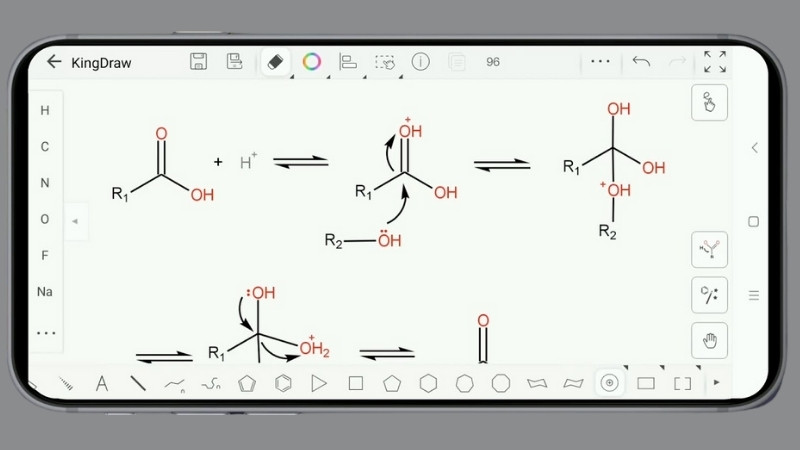
| Feature | Details |
|---|---|
| Platform | Android, iOS, Windows |
| Size | 100–150 MB |
| Offline Access | Yes |
| Main Tool | Chemical Structure Drawing |
| Cost | Free with optional cloud sync |
KingDraw turns your phone or tablet into a chemistry sketchpad. Students can draw structures the way they do on paper, but cleaner. Tap the pencil icon, then choose atoms, rings, or charges. One touch drops a benzene ring. Another adds a methyl group. Long chains snap into place.
The toolbar feels like a professional CAD tool for molecules. Tap-and-drag to rotate. Double-tap to edit bonds. Resize, delete, label—all without switching apps. Students doing organic homework or working on synthesis problems get full control over layout.
Every drawn structure can be exported as an image or chemical file. It also auto-generates IUPAC names for most compounds. That feature alone saves hours of second-guessing.
KingDraw supports SMILES and InChI formats. Students who work with simulations or research tools will find this useful. Teachers can use it to build custom questions. And everything works offline once downloaded.
The interface has a slight learning curve. But once a student spends five minutes tapping around, it clicks. KingDraw replaces scratched-up notebooks and turns every screen into a real chemistry lab bench.
4. Organic Reactions
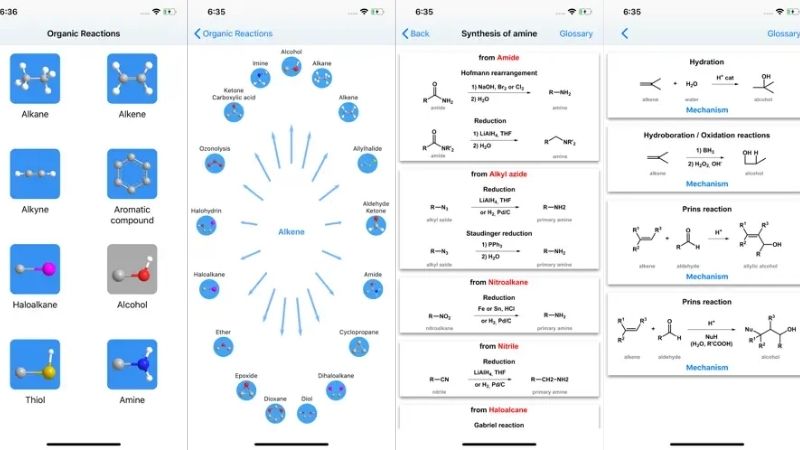
| Feature | Details |
|---|---|
| Platform | Android, iOS |
| Size | Around 80 MB |
| Offline Access | Yes |
| Focus Area | Named Organic Reactions |
| Cost | Free |
Every chemistry student hears names like Aldol, Cannizzaro, or Friedel–Crafts, but most forget what those reactions actually do. Organic Reactions solves that by cutting through the fog. Open the app, and the list of named reactions appears alphabetically. Tap one, and the full setup loads on a single screen.
Each entry shows reactants, products, reaction conditions, and a clean diagram of the mechanism. No fluff. No back-and-forth clicking. Swipe down to see synthetic use cases and special notes like rearrangements, stereochemistry, or side products.
Students working through organic reaction banks or synthesis pathways can use this app like flashcards—but smarter. There is no voiceover or gamification. The layout looks like a trimmed-down textbook but without the pages and fluff. Everything fits in your hand.
Perfect for revision or lab prep. Teachers can pull up reactions mid-lesson. Students can study without waiting for a textbook to flip to the right chapter. This app builds pattern recognition in reactions, not just recall.
5. Periodic Table by Royal Society of Chemistry
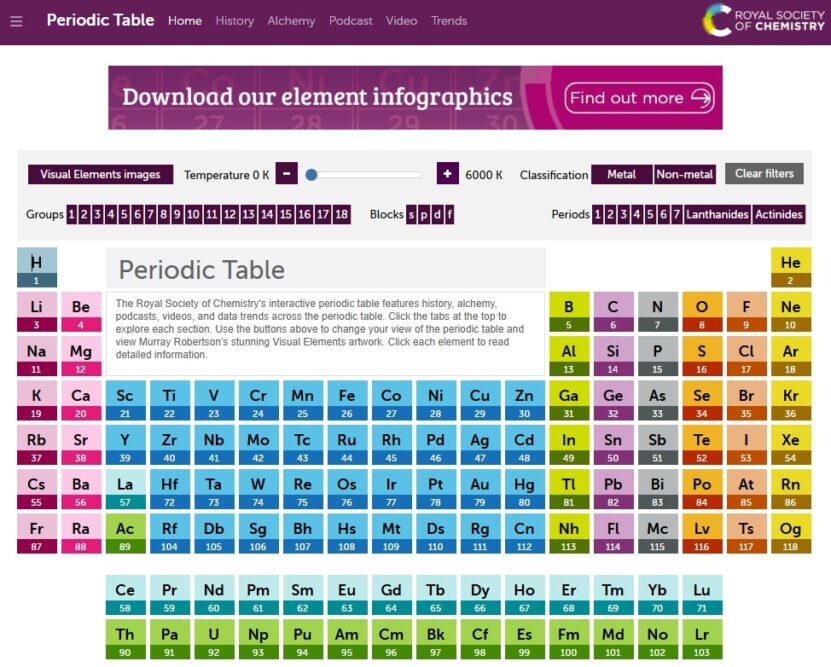
| Feature | Details |
|---|---|
| Platform | Android, iOS, Web |
| Size | 60–90 MB |
| Offline Access | Yes |
| Visual Enhancements | Audio, Videos, Real Data Sets |
| Cost | Free |
This app feels like a museum and a data lab combined. Built by the Royal Society of Chemistry, the periodic table here is not flat. It breathes. Tap any element, and you get audio pronunciation, discovery stories, sample compounds, and real footage of the element reacting in real life.
Want to see what cesium does in water? There’s a video for that. Want to hear how a chemist describes carbon bonding? There’s a clip for that too.
Each element page contains deep data: melting point, atomic radius, group trends, historical notes, and isotope info. All neatly formatted. Swipe between graphs showing changes across periods and groups.
There’s even a timeline feature that shows how elements were discovered and added to the table over time.
6. Equate Formula Solver
| Feature | Details |
|---|---|
| Platform | Android |
| Size | Around 20 MB |
| Offline Access | Yes |
| Focus Area | Chemistry Formulas and Equations |
| Cost | Free |
Students often freeze when they face word problems. Equate Formula Solver gives them a way out. Open the app and a list of topics appears: moles, gas laws, thermodynamics, molarity, and more. Tap one, and it opens a clean formula box with blanks for input.
Type in the knowns. The app handles the math and fills in the unknown. It gives the formula used, shows the substitution step, and displays the answer with units. No ads. No distractions.
Each section comes with short definitions and unit tips. There’s no long theory or background chatter. This is not a replacement for concept learning. It is a tool for fast and accurate problem-solving.
Built for students who want to check homework, confirm calculations, or prepare for timed exams. Works completely offline. Every major high school chemistry equation is included.
The UI is clean, minimal, and color-coded. No confusion between pressure and volume units. No skipped steps. Every formula is verified.
7. Chemistry Formula
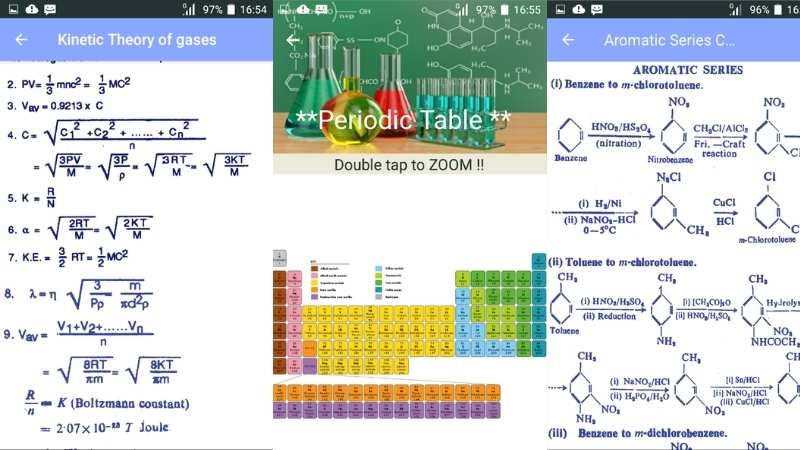
| Feature | Details |
|---|---|
| Platform | Android |
| Size | Around 15 MB |
| Offline Access | Yes |
| Focus Area | Key Chemistry Formulas |
| Cost | Free |
Every formula a high school student needs sits inside this app. No loading, no nonsense. Molarity, atomic structure, equilibrium, pH, colligative properties—each category opens to a page full of clean formulas with symbols explained right below.
Tap any formula, and a short line explains where it applies and what each variable means. Some come with quick examples using actual values.
No calculator built in, no quiz engine, no distractions. Just formulas, clean and fast. Great for last-minute review or filling in class notes.
There’s also a “Favorites” feature. Long-press any formula to pin it for fast access. Students who need repetition or struggle with memorization will find it useful.
8. Chemistry Pro
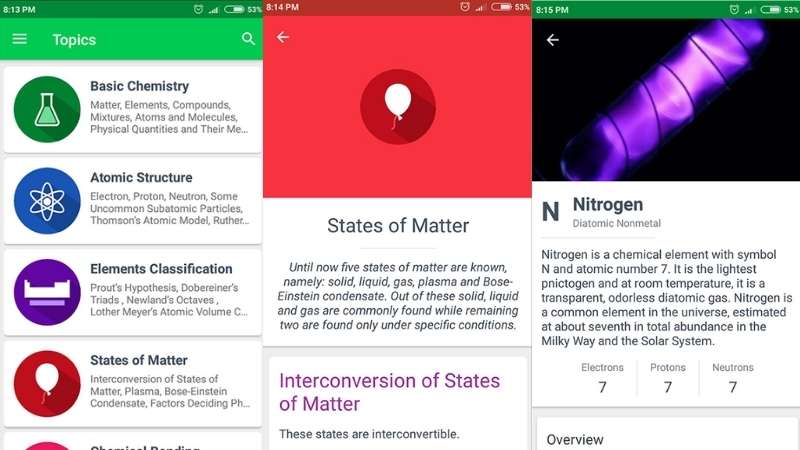
| Feature | Details |
|---|---|
| Platform | Android |
| Size | Around 35 MB |
| Offline Access | Yes |
| Focus Area | General Chemistry Reference |
| Cost | Free |
This app feels like a digital textbook—but only the useful parts. Open it and you get a menu: Atomic Structure, States of Matter, Electrochemistry, Chemical Bonding, and more. Each topic opens to short, focused explanations with diagrams, charts, and formula boxes.
Some pages offer short MCQ tests. Others give key examples. There’s a mix of notes, facts, and visuals. Nothing gets too long. Everything is scrollable and touch-friendly.
What makes it valuable is how it pulls everything together. Instead of flipping between apps for notes, definitions, and formulas, Chemistry Pro keeps all of it in one space.
It works offline. It loads fast. It never locks content behind a paywall. Students with spotty internet or no budget can rely on it fully.
Ideal for quick review before tests, especially if the student forgot to bring a notebook.
9. Science Practical Simulator
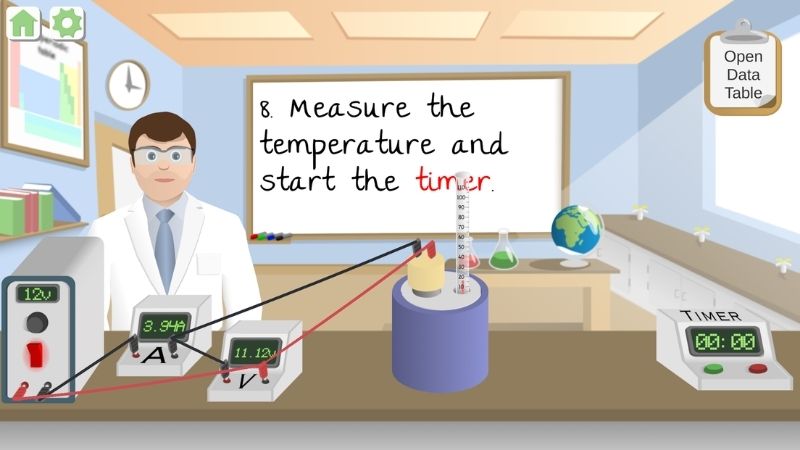
| Feature | Details |
|---|---|
| Platform | Android |
| Size | Around 100 MB |
| Offline Access | Partial |
| Focus Area | Virtual Chemistry Experiments |
| Cost | Free |
Lab periods are short. Supplies run out. Mistakes cost time. This app solves that. Science Practical Simulator lets students walk through lab experiments without stepping into a real lab.
It opens with a 3D workbench. Choose an experiment—acid-base titration, flame test, displacement reaction. Then drag the right beaker, pipette, or salt into place. Drop in the solution and see what happens.
Each setup includes a short description, a goal, and a checklist of steps. Make a mistake, and it corrects you. Get it right, and the reaction completes.
Audio cues and clear animations help students connect classroom theory with lab reality. This app cannot replace a real lab, but it can prepare students to do better when the time comes.
It works on low-end phones. Most modules download once and run offline after that.
10. The Elements in Action
| Feature | Details |
|---|---|
| Platform | iOS, Web |
| Size | Around 70 MB |
| Offline Access | No |
| Focus Area | Element Behavior Demonstrations |
| Cost | Free |
This app feels like chemistry caught on camera. Tap any element and watch it react. Lithium dropped in water. Sodium catching fire. Magnesium lighting up with brilliance. Each element includes a short HD video clip showing how it behaves with air, flame, water, and acids.
The clips come with a short narration that explains the chemical process and reaction type. No deep theory. Just clear, visual experience.
For students who learn best by seeing, this app delivers real value. It shows what textbooks only describe. Flame color. Reaction speed. Gas release.
The interface is simple. Scroll the table, tap an element, watch. Great for class demos or homework supplements.
No offline mode. Needs stable internet. But every second on this app feels sharp and alive. Perfect for visual learners or anyone curious about how matter actually behaves under pressure.
FAQs
Can KingDraw convert a hand-drawn molecule into a 3D model?
No. KingDraw focuses only on 2D structure creation. It allows clean chemical diagrams, naming, and exports in formats like SMILES and InChI. For 3D visualization, a separate tool like Chem3D or MolView would be needed.
Does ReactionFlash include photochemical or radical reactions?
Yes. ReactionFlash includes several radical and photochemical reactions under specialized categories. Examples include the Norrish Type I and II reactions and the Barton reaction. These are often excluded in textbooks but are included here with full mechanism steps.
Is the Royal Society of Chemistry’s periodic table app available in multiple languages?
Yes. It supports several languages including Spanish, French, and Chinese. Language can be switched in the app settings. Element data and videos adjust automatically based on the chosen language.
Can Equate Formula Solver handle mixed-unit inputs like atm and kPa in gas law calculations?
Yes. The app accepts both atm and kPa as input units. It automatically converts units to match the equation. Students do not need to adjust values manually before using formulas like PV=nRT.
Does Science Practical Simulator allow multiple outcome paths if steps are done incorrectly?
Yes. The app includes branching outcomes in certain experiments. For example, incorrect acid choice during titration leads to failed color change or improper neutralization, followed by corrective hints. It does not simply block progress—it shows why the outcome fails.
Last Words
Every app listed earns its place by solving a real problem chemistry students deal with every day.
One clears up confusing equations. One brings dead elements to life with motion and sound. One trains the hand to draw like a chemist. Each one brings a sharp, single function that works without forcing students to dig through menus or paywalls.
Students do not need all ten. But the right one at the right time can flip a failing grade into a solid pass or turn a dull class into something that clicks.
Related Posts:
- Top 10 Free Online IQ Tests You Can Take Right Now
- Best App to Read Books for Free - Top Recommendations
- Discover the Best Apps to Learn Japanese in 2025
- Top 12 Chrome Extensions for Nursing Students in 2025
- Total Number of High Schools in the U.S. (2025 Update)
- The High Cost of Education - 25 Most Expensive US.…










